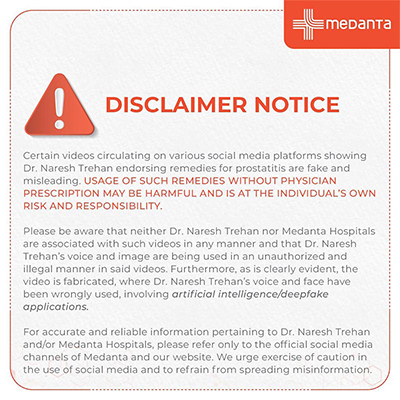Spinal fluid aspiration, also known as lumbar puncture or spinal tap, is a medical procedure which collects a sample of cerebrospinal fluid (CSF) for diagnostic purposes. This procedure includes inserting a thin needle into the spinal canal, usually in the lower back, to withdraw a small amount of CSF. The CSF is a clear fluid surrounding the brain and spinal cord, providing protection and nutrients. By analysing the CSF, Doctors can gain valuable insights into various medical conditions affecting the central nervous system (brain, spinal cord, and nerves).
How Does It Help?
Spinal fluid aspiration plays a crucial role in diagnosing many neurological conditions. It can help identify infections, such as meningitis or encephalitis, as well as autoimmune disorders, such as multiple sclerosis or Guillain-Barré syndrome.
Spinal fluid aspiration can help measure intracranial pressure, which is higher in conditions such as hydrocephalus, brain tumours, or intracranial haemorrhage.
Spinal fluid aspiration can detect the presence of cancerous cells in the CSF, aiding in the diagnosis of certain malignancies.
The procedure can also relieve pressure in the central nervous system or administer medications directly into the CSF.
A lumbar puncture can also help administer medications directly into the cerebrospinal fluid.
Preparation
Before undergoing a spinal fluid aspiration (lumbar puncture), several preparations may be necessary:
Before undergoing a spinal fluid aspiration, doctors may advise the patients to avoid certain medicines, such as blood thinners, that can hinder the procedure or increase the risk of bleeding.
Notifying the healthcare professional about any allergies, medical conditions, and ongoing medications or supplements is essential.
The procedure is typically carried out in a sterile setting, such as an operating room or a specialised clinic, to minimise the risk of infection.
Wear loose, comfortable apparel that allows easy access to the lower back area.
Procedure
Patient positioning: During the spinal fluid aspiration procedure, the patient is positioned on their side with their knees drawn up towards their chest. This position helps to open up the spaces between the vertebrae, making it easier to access the spinal canal.
Anaesthesia: The healthcare provider cleans the area around the lower back with an antiseptic solution and administers a local anaesthetic to numb the area.
Needle insertion: Once the area is numb, a healthcare provider will insert a thin needle into the spinal canal and withdraw a small amount of CSF using a syringe. At this time, they can measure the CSF pressure.
Needle removal: Once the healthcare provider has collected enough CSF or taken the necessary measurements, they will carefully remove the needle from the spine. Then, they may apply a small bandage to the puncture site to prevent CSF leakage.
Post-Treatment
After the spinal fluid aspiration, patients may be asked to lie flat for a short period to minimise the risk of complications, such as headaches or leakage of CSF. It is essential to follow any post-procedure guidance provided by your doctor, which may include avoiding strenuous activities for a certain period and drinking plenty of fluids to help replenish the CSF. In some cases, the collected CSF sample may be sent to a laboratory for further analysis, and the results will be communicated to the patient by their healthcare provider.
Benefits
Spinal fluid aspiration offers several benefits in diagnosing and managing neurological conditions. By analysing the CSF, doctors can accurately diagnose infections, autoimmune disorders, and malignancies affecting the central nervous system. The procedure also relieves pressure in the central nervous system, which can help alleviate symptoms and improve the patient's quality of life. Furthermore, spinal fluid aspiration enables the direct administration of medications into the CSF, ensuring targeted treatment for specific conditions.
Risks
Although spinal fluid aspiration is generally considered safe, a few potential risks and drawbacks are present with the procedure. The most common side effect is a headache, which can occur due to a leakage of CSF from the puncture site. This headache is typically temporary and can be managed with rest and fluids. Serious complications, such as bleeding, CSF leak, infection, nerve damage, or an allergic reaction to the anaesthesia, can occur in rare cases. These risks are minimised by ensuring that a skilled healthcare professional performs the procedure in a sterile environment.
What Makes it So Unique?
Spinal fluid aspiration is a unique procedure because it provides valuable diagnostic information about conditions affecting the central nervous system. By directly accessing the CSF, doctors can gather crucial insights into infections, autoimmune disorders, and malignancies that would otherwise be challenging to diagnose. The procedure also allows targeted treatment by administering medications directly into the CSF, bypassing the blood-brain barrier. This targeted approach can augment the effectiveness of treatment and minimise systemic side effects.
Why choose Medanta for spinal fluid aspiration?
When it comes to spinal fluid aspiration, choosing the right healthcare provider is essential. Medanta, a renowned medical institution, offers advanced facilities, a team of proficient healthcare professionals, and a patient-centred approach. With their expertise in neurology and neurosurgery, Medanta ensures that spinal fluid aspirations are performed safely and accurately. The institution's commitment to excellence and patient care makes it a trusted choice for people seeking diagnostic and therapeutic measures for conditions affecting the central nervous system.
FAQs
What is spinal fluid aspiration?
Spinal fluid aspiration, or lumbar puncture or spinal tap, is a medical procedure used to collect a cerebrospinal fluid (CSF) sample for diagnostic purposes.
Why is spinal fluid aspiration performed?
Spinal fluid aspiration helps diagnose various medical conditions affecting the central nervous system, such as infections, autoimmune disorders, and malignancies.
How is spinal fluid aspiration performed?
During this diagnostic procedure, a healthcare professional inserts a thin, hollow needle into the spinal canal in the lower back, and a small amount of CSF is withdrawn for analysis.
Is spinal fluid aspiration painful?
The procedure is usually not painful, as local anaesthesia is administered to numb the area before the needle insertion.
Where is spinal fluid aspirated from?
Spinal fluid is aspirated from the spinal canal, typically through a needle inserted between two lumbar vertebrae in the lower back.
Who performs spinal fluid aspiration?
Spinal fluid aspiration is typically performed by a healthcare professional trained in the procedure, such as a neurologist, neurosurgeon, or interventional radiologist.
What equipment is used for spinal fluid aspiration?
The procedure requires a sterile needle, a syringe for withdrawing the CSF, container, and other sterile supplies.
How long does a spinal fluid aspiration procedure take?
The procedure usually takes around 30 minutes, but the duration may vary and depends on the patient's condition and any additional tests or treatments required.
Is sedation required for spinal fluid aspiration?
Healthcare providers usually do not administer sedation for spinal fluid aspiration. However, they may consider sedation if the patient is anxious or unable to remain still during this testing.
Are there any risks associated with spinal fluid aspiration?
Although rare, there are a few potential risks and complications associated with spinal fluid aspiration, including headaches, bleeding, nerve damage, infection, and allergic reactions.
Can spinal fluid aspiration help diagnose infections?
Spinal fluid aspiration can help diagnose various infections affecting the brain or spinal cord, such as meningitis, encephalitis, and tuberculous meningitis.
Can spinal fluid aspiration help diagnose neurological conditions?
Spinal fluid aspiration can aid in the diagnosis of neurological conditions such as multiple sclerosis, Guillain-Barré syndrome, and Alzheimer's disease.
Can spinal fluid aspiration diagnose autoimmune disorders?
Spinal fluid aspiration can help diagnose autoimmune disorders affecting the central nervous system, such as multiple sclerosis and autoimmune encephalitis.
Can spinal fluid aspiration detect blood in the cerebrospinal fluid (CSF)?
Spinal fluid aspiration can detect the presence of blood in the CSF, which can indicate conditions such as cerebral or subarachnoid haemorrhage.
Can spinal fluid aspiration be used to relieve pressure in the central nervous system?
Spinal fluid aspiration can relieve pressure in the central nervous system, which can help alleviate symptoms and improve the patient's condition.
Can spinal fluid aspiration detect cancerous cells in the CSF?
Spinal fluid aspiration can detect the presence of cancerous cells in the CSF, aiding in the diagnosis of certain malignancies affecting the central nervous system.
Can spinal fluid aspiration be used to administer medications directly into the CSF?
Spinal fluid aspiration allows for the direct administration of medications into the CSF, enabling targeted treatment for specific conditions.
Can spinal fluid aspiration diagnose Alzheimer's disease?
Spinal fluid aspiration can help support the diagnosis of Alzheimer's disease by detecting specific biomarkers associated with the condition in the CSF.
Can spinal fluid aspiration diagnose hydrocephalus?
Spinal fluid aspiration can help support the diagnosis of hydrocephalus by analysing the CSF for signs of increased pressure or other abnormalities.
Can spinal fluid aspiration diagnose demyelinating diseases?
Spinal fluid aspiration can detect specific markers and abnormalities in the CSF, aiding in the diagnosis of demyelinating diseases, such as multiple sclerosis.
Can spinal fluid aspiration diagnose neurosyphilis?
Spinal fluid aspiration can help diagnose neurosyphilis by detecting specific markers and abnormalities in the CSF.
Can spinal fluid aspiration diagnose brain abscesses?
Spinal fluid aspiration can help diagnose brain abscesses by analysing the CSF for signs of infection and inflammation.
Can spinal fluid aspiration diagnose intracranial hypotension?
Spinal fluid aspiration can help support the diagnosis of intracranial hypotension by analysing the CSF for signs of low pressure or other abnormalities.
Can spinal fluid aspiration diagnose leptomeningeal metastases?
Spinal fluid aspiration can detect cancerous cells or other markers in the CSF, aiding in the diagnosis of leptomeningeal metastases.
Can spinal fluid aspiration diagnose primary CNS lymphoma?
Spinal fluid aspiration can help support the diagnosis of primary CNS lymphoma by analysing the CSF for signs of cancerous cells or other abnormalities.
Can spinal fluid aspiration diagnose tuberculous meningitis?
Spinal fluid aspiration is one of the primary methods for diagnosing tuberculous meningitis, as it allows for the analysis of CSF for signs of infection.
Can spinal fluid aspiration diagnose Lyme neuroborreliosis?
Spinal fluid aspiration can help support the diagnosis of Lyme neuroborreliosis by analysing the CSF for signs of infection and specific antibodies.
Can spinal fluid aspiration diagnose CNS lymphocytosis?
Spinal fluid aspiration can help diagnose CNS lymphocytosis by analysing the CSF for an increased number of lymphocytes, indicating specific conditions.


